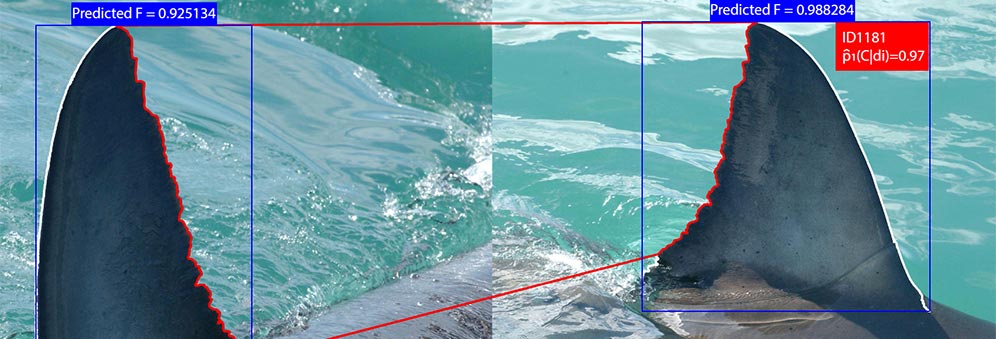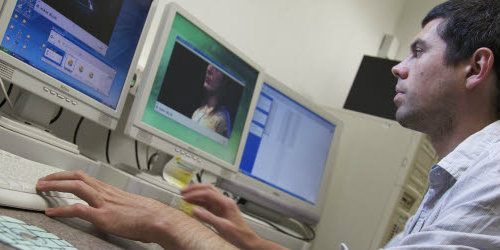Pattern recognition systems for animal identification
Automated computer vision applications help zoologists identify individual great white sharks and African penguins, without the need for manual tagging.
Automated computer vision applications developed by Dr Tilo Burghardt and his colleagues in Bristol’s Department of Computer Science and School of Physics can recognise complex biological “fingerprints” allowing for an identification of individual animals and engaging the public in conservation.
As humans we find it easy to distinguish between individual faces. But how do you tell one penguin from another, especially among the thousands in one colony?
For more than a century after Darwin, zoologists relied on expert drawings and laborious manual identification - for example, comparing the unique black-and-yellow patterning on Bewick’s swans’ bills.
Then in the 1990s digital photography, machine vision and pattern recognition techniques combined to enable some unique technology developments in visual animal biometrics (VAB).
Over the past decade, Dr. Tilo Burghardt and colleagues at Bristol have been working towards pattern recognition systems that can identify individual animals automatically. A small breakthrough came in 2006 when the early technology identified individual African penguins on Robben Island in South Africa.
Just as each human has a unique fingerprint, most African penguins have a unique pattern of dark feathers on their otherwise white front.
Burghardt worked closely with polymer physicist and penguin enthusiast Professor Peter Barham from the School of Physics and describes the Robben Island work as a “proof of concept” study.
It showed that, in the right conditions, machine vision could assist with a job that previously relied on painstaking, mainly expert, observation. It also demonstrated that the technology could potentially reduce the time-consuming and invasive catching and tagging of creatures in their natural habitat.
Burghardt explains that the basic principle behind the approach can be applied to all kinds of species, so long as some kind of bio-mathematical pattern can be imaged and the right technology is available.
More recent work for example includes a collaboration with the SaveOurSeas Foundation to identify individual great white sharks in their natural habitat.
Conservation efforts and biological studies have to date mainly relied on manual identification of individual sharks by the precise jagged shape of their dorsal fin –a pattern that is thought to barely change over decades and so is useful for long-term biometric recognition.
“The technology is slowly changing the minds of people working in this field,” says Burghardt. He’s conscious that zoologists and conservationists have for decades relied on enormously time-consuming but trusted manual identification schemes.
Although some are wary, others are keen to try out a system that could identify individual sharks in just a few seconds, allowing them to spend more of their time on scientific studies and conservation work.
As well as the scientific impact, the rapid and highly visual nature of biometric identification systems lends itself perfectly to public engagement. For example Bristol Zoo trialled a system developed under the TSB-funded ARKiveIn Your Pocket collaboration.
Visitors to the zoo took photos of gila monsters - large, venomous lizards from North America with dramatic pink, orange and yellow skin patterning - and the system quickly identified exactly which had been captured digitally.
The way in which the systems operate also presents a highly transferable concept, with significant potential for commercial impact.
One example has been in polymer physics, where the similarity between the chaotic nature of crystal growth and the patterns in animal features can be exploited for identification. A related patent has been successfully licensed to a commercial partner with a view to identification of liquid crystal polymers.
Next for Burghardt’s team is a return to South Africa to scale up the use of their biometric systems. “This VAB technology is still in the embryonic phase,” he says. “[ultimately] we want to make animal identification independent from human labelling.”

